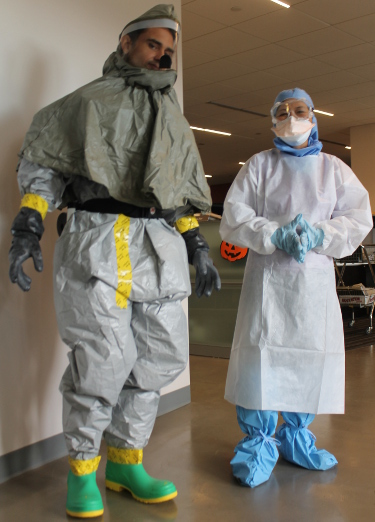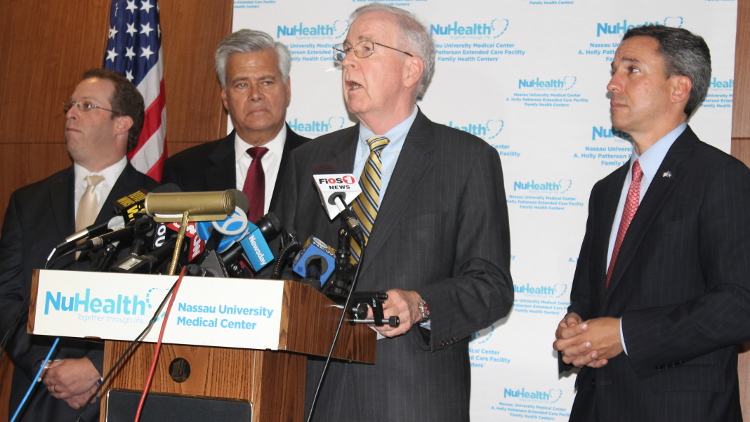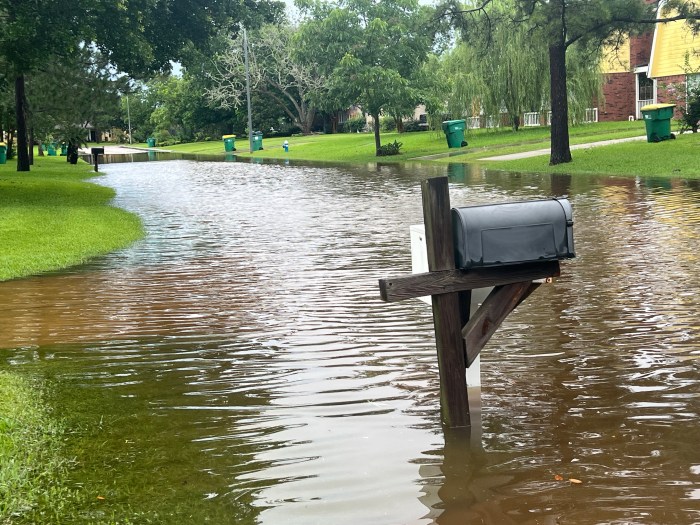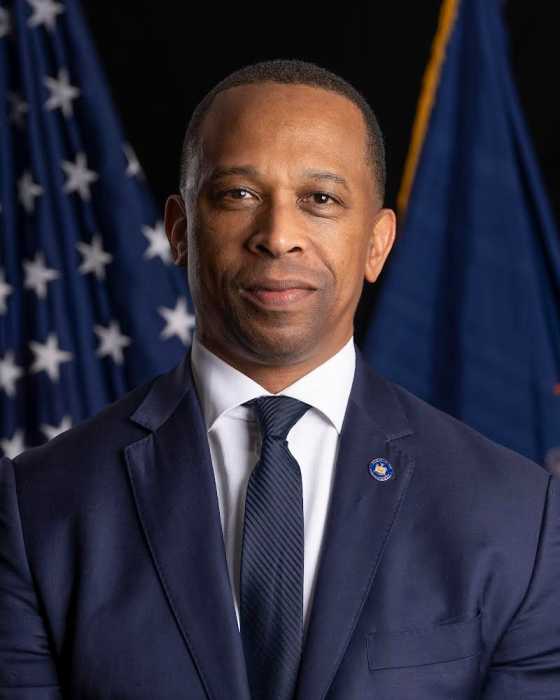With a Dallas hospital’s safety protocols under intense scrutiny for its handling of a now-deceased Ebola patient’s treatment, lawmakers are calling on New York State health officials to immediately develop a comprehensive plan for the deadly virus.
The state Senate health committee is planning to hold hearings on whether the health care system is prepared for Ebola. Lawmakers also urged the state Department of Health to assess its preparedness and issue a report on its findings within a month. Upon receiving suggestions, members of the state Senate and Assembly would then determine how much money to allocate for the state’s response.
“The recent events in Dallas have called into question the extent to whether a health care system that is supposed to be prepared to handle an individual can actually handle that individual,” state Sen. Kemp Hannon (R-Garden City), chair of the senate health committee, said Wednesday during a news conference at Nassau University Medical Center. He said his biggest concern is a lack of publicly available information regarding the state’s preparedness. Hannon is seeking public assurances that a detailed plan is in place even though likelihood the disease being widespread in New York is “slim,” he said.
Among the issues they would like to see studied is whether a single New York hospital can be federally designated as a biohazard location with a special isolation unit capable of treating such infectious diseases as Ebola. Currently, there are only four in the country; the closest is in Bethesda, Md.
State Senate co-leader Dean Skelos (R-Rockville Centre) said hearings would help determine whether the state is “truly prepared” to detect and treat potential Ebola patients. Unclear is how many people would make up the committee, when hearings would begin and how much it would cost to implement recommendations.
Hannon suggested that any funds allocated to the state’s response should come out of the billions the state has received from major settlements with financial institutions such as the $16.5 billion deal with Bank of America, of which $800 million was allocated to New York.
Also of interest is if state health officials have conducted a case-by-case review of each emergency room, hospital and clinic in the state.
“Is there a checklist?” Hannon asked rhetorically.

The senator expressed disappointment that upon scrutinizing the state health department’s website for a step-by-step protocol on infectious diseases, he was diverted to the Centers for Disease Control and Prevention website. He contrasted this with the World Health Organization’s site which he said contained a “detailed list of what needs to be done in terms of prevention and treatment.”
The state health department said in a statement through a spokesperson that it’s working with federal and local partners to “ensure that New York is prepared to care for a patient with Ebola should the need arise, and that health care providers and the public alike are protected.”
“DOH continues to work with and provide guidance to hospitals as they identify and train staff who would care for patients; identify areas in the hospital where patients would be cared for; provide staff with personal protective equipment (PPE) and conduct ongoing training in its use; conduct drills and exercises to ensure that health care workers do not contaminate themselves and that they correctly don and remove PPE,” the statement continued. “Hospitals currently have supplies of personal protective equipment and DOH has additional stockpiles to dispatch to hospitals if needed.”
Treating the virus and preventing others—especially first responders and health care workers—from becoming infected has become a priority across the country.
The Dallas hospital that treated Thomas Eric Duncan, who lost his battle to the disease last week, has been criticized for allowing Duncan to leave following his initial visit to the hospital, and its handling of his case afterward. Two nurses who helped treat Duncan have tested positive for the virus. In the most recent case, officials said the 29-year-old nurse who helped treat Duncan was diagnosed one day after traveling by plane from Ohio to Texas.
One of the largest nurse unions in the country released a statement on its site alleging that upon Duncan’s second visit to the hospital that he was left for several hours in an area with other patients, instead of being isolated.
“No one knew what the protocols were or were able to verify what kind of personal protective equipment should be worn and there was no training,” the union, National Nurses United wrote. The union said the account came from registered nurses familiar with “what occurred at the hospital.”
“There was no advance preparedness on what to do with the patient, there was no protocol, there was no system,” the union alleged. “The nurses were asked to call the Infectious Disease Department. The Infectious Disease Department did not have clear policies to provide either.”
Dr. Victor Politi, CEO of NUMC, stressed during the press conference that the hospital is doing all it can to train its workers, even going as far as setting up “mock patients” at random hours to see how the staff reacts.
Politi said he has ordered 100 additional personal protective suits as a precaution. The suits will be placed throughout the hospital, he said.
Jerry Laricchiuta, president of Nassau’s Civil Service Employees Association, which represents 3,500 NUMC workers, said that his members are “nervous.” He also expressed concerned that their treatment of potential Ebola patients can cause them to be “tomorrow’s victims.” Still, he noted that they’re “professionals” and are prepared to step in when needed.
The state’s readiness review would also include protocols for identification of patient, patient transportation, isolation, staff allocation, personal protective equipment, clinical management, environmental cleaning, waste management, burial, laboratory requirements and other precautions, Hannon said.
Suffolk County also held a meeting Wednesday with public officials regarding infectious disease protocols.


































